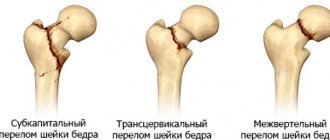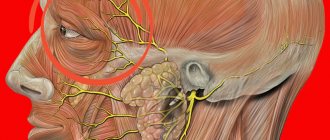Eye injury always occurs suddenly. In this case, you need to know what measures to take to prevent vision-threatening consequences. Behavioral tactics depend on the type of injury. All damage to the visual apparatus has a certain classification.
[toc]
You can encounter such a situation completely by accident, but you should not always panic. Some injuries are not serious. The main thing is to provide first aid in time and prevent complications. The eyes are a very sensitive area. Any impact, even a minor one, is felt very clearly. Acute pain symptoms occur and vision is impaired.
If the injury is serious, you may even lose vision in the affected eye. Of course, everything largely depends on the nature of the damage. In some cases, it becomes impossible to restore lost vision.
Classification
The organs of vision are considered vulnerable to mechanical stress. Physical and chemical factors can cause eye injuries. Combined injury is the simultaneous trauma of several structures, for example, the eyeball and orbit. According to the classification of eye injuries, there are:
- blunt trauma – otherwise eye contusion;
- chemical burns and eye injuries;
- radiation damage to the eye shell;
- non-penetrating wounds - mainly injuries of the mucous membrane, cornea, sclera and corneoscleral zone of the eye;
- penetrating injuries – eye injuries involving the lens and vitreous body in the pathological process.
Mechanical injuries can be blunt, torn, cut, or punctured. More often, mechanical eye injuries are closed. According to the classification of eye injuries, mechanical disorders of the closed type have the most favorable prognosis. If a penetrating injury occurs, damage to the optic nerve is possible, and traumatic cataracts of the eye develop.
Some types of eye injuries include injuries involving the introduction of foreign bodies. If a fragment enters through the sclera, detecting the entrance hole is problematic. Due to penetrating trauma, a hole with hemorrhage is formed in the cornea. Under the influence of iron foreign bodies, pigmentation and clouding of the lens occur. Often, injuries are adjacent to eye burns - the thermal factor and the entry of a foreign body threaten retinal detachment.
Trauma code according to ICD 10
According to ICD 10, eye injuries are coded S05. A penetrating wound with a foreign body has a code according to ICD 10 - S05.5. An open wound of the eyelid tissue is coded S01.1.
Orbital injuries.
Often combined with facial injuries, the eye and its auxiliary apparatus are often affected. With injuries to the orbit, hemorrhages often occur in the eyelids; If blood pours out behind the eye, it bulges - exophthalmos.
With injuries to the orbit, fractures of the bones often occur, especially in children; To identify them, an x-ray of the orbital bones must be taken. Damaged bones of the orbit can shift, and then the eyeball changes its position - it either sinks (enophthalmos) or protrudes (exophthalmos).
Injuries to the orbit can be accompanied by damage to the optic nerve, including its rupture. In this case, the victim immediately loses vision. If, simultaneously with an injury to the orbit, an injury to the paranasal sinuses occurs, then air penetrates into the tissues around the eye and when pressure is applied to them, a cracking sound (crepitus) is felt. When injured, the lateral muscles of the eye can be damaged, which leads to limited mobility.
Causes
How dangerous the violation will be depends on the mechanism of injury, as well as the force and speed of impact of the object. Eye injury from a champagne cork or tree branch is common. A blow to the nose with a blunt object may also damage the organs of vision. In everyday life, unfortunate falls or collapses usually occur. In most cases, domestic injuries do not have serious consequences.
More often, eye damage occurs when foreign bodies enter the eye. Sand, small fragments, nails, pins - they cause superficial and deep damage to the structures of the eyeball. The causes of childhood injuries are predominantly carelessness. Also, eye injuries in children occur when playing unsafely with slingshots, firecrackers, and toy guns.
You can get a puncture wound when hit with a sharp object - a piece of glass, a knife blade. Occupational and sports eye injuries are common. In chemical production, if safety precautions are not followed, serious injuries to the eyes and respiratory organs occur. Mechanical damage is common in construction.
Eye drops for eye injury: first aid and types
Various types of eye damage are classified as trauma. Depending on the degree of damage and the area, they are divided into types, but the essence does not change.
The organs of vision transmit about 95% of the information when perceiving the surrounding space, therefore it is very important to maintain their functionality. Even with one blind eye, a person already perceives the world around him incorrectly.
Often the consequences of injuries to the organs of vision are unpredictable, and the prognosis generally depends on the type of injury, its characteristics, and how timely qualified assistance was provided to the victim.
Symptoms
When a foreign object gets in, lacrimation occurs. The fragment is visualized and can be removed if it is on the surface. A bruise is characterized by swelling, the eye hurts immediately after the injury, and if the integrity of the skin on the eyelid is damaged, bruises remain and hematomas develop.
For various types of injuries there are characteristic symptoms:
- photophobia;
- the whites turn red;
- the eye is watery;
- "flies" fly;
- the foreign body sensation persists.
The severity of the injury determines the development of additional symptoms. Penetrating wounds are characterized by blepharospasm, hemorrhage in the tissue, and the presence of a wound channel. When injured, it is mainly the affected eye that waters, or both at the same time. Due to the presence of intraocular hypotension, vision deteriorates. Due to injuries, the internal contents fall out: the iris, the vitreous body.
Superficial wounds of the eye
The most common occurrence. This category of injuries includes minor wounds of the eyelids, conjunctiva or cornea of various types. They often occur when a nail, finger, or tree branches accidentally enter the eye, as well as when using damaged contact lenses. Superficial wounds are characterized by a violation of the integral structure of the skin, therefore, in such cases, initial disinfectant treatment of the wound is required.
In some cases, it is necessary to apply sutures and excise tissue along the edges of the injury site. In addition, in parallel, the patient is prescribed a course of drug treatment aimed at antibacterial and antiseptic effects. In the most severe cases, in the presence of hemorrhages, procedures such as subconjunctival injections of the drug dionin, electrophoresis, and autohemotherapy are indicated. These measures help accelerate blood circulation and have a resolving effect.
Symptoms of superficial wounds:
- Redness of the conjunctiva (mucous membrane) occurs;
- The patient feels the presence of a foreign body under the eyelid;
- There is a sharp cutting pain in the affected eye;
- There is profuse lacrimation and photophobia;
- Some herbs are characterized by swelling of the eyelids;
- In severe cases, visual acuity decreases.
These injuries are usually caused by sharp objects and lead to disruption of the integrity of the ocular capsule (i.e., cornea or sclera). Depending on the area of capsule damage, corneal, limbal, and scleral wounds are distinguished. These damages are dangerous both in themselves and because of possible{amp}gt; complications.
Complications of penetrating eye injuries. Such complications are often associated with foreign bodies entering the eye, most often metal magnetic or non-magnetic fragments.
Diagnostics. To identify them, special x-ray examinations are carried out inside the eye:
- X-ray localization method according to Komberg - Baltin or
- non-skeletal radiography according to Vogt.
X-ray localization according to Comberg-Baltin is carried out using an aluminum indicator prosthesis with a hole for the cornea in the center, on the side of which 4 lead marks are placed. After anesthesia with a 1% dicaine solution, an indicator prosthesis is placed on the eye so that the marks are located at 12, 3, 6, 9 o'clock. Direct and lateral photographs are taken, in which the exact location of the foreign body is determined using measuring circuits.
First aid
What to do if the eyeball is damaged? It is important to get help for an injury quickly and without causing additional harm. If injured, the victim is hospitalized. For penetrating injuries, it is necessary to administer antitetanus serum. A sterile dressing should be applied before admission to the hospital. If necessary, a pain reliever is given - Nurofen, Ibuprofen. In consultation with the doctor, drugs with lidocaine or alcaine are instilled.
Drops for eye injury
Eye injuries can occur in anyone at the most unexpected moment. They cause a lot of hassle and discomfort.
What drops should I use for an eye injury?
As a rule, many people try to immediately deal with eye injuries. In fact, there are now many different remedies that will help relieve all symptoms. Therefore, in this article we decided to tell in detail which eye drops to use for eye injury in order to speed up the treatment process.
Diagnostics
In case of simultaneous craniocerebral disorders or foreign body entry, radiography is prescribed. In the case of a superficial location of the penetrating object, the damaged area is examined with ultrasound. The doctor examines the back of the eyeball using a Goldmann lens. In ophthalmology, as part of general diagnostics, eye structures are examined using computed tomography. Additional study of non-penetrating eye injuries is required for combined injuries.
If a deep wound is suspected, biomicroscopy will help. A test with fluorescein is considered a reliable research method. Cycloscopy is necessary to detect ciliary body breaks. If the face is damaged, it is necessary to consult a neurosurgeon. You may also need the help of a neurologist or otolaryngologist. Early detection of pathologies of the visual analyzer and damage to the optic nerve is extremely important.
Recommendations for eye injury
Recommendations for taking eye drops for injuries
Let's select a few more drops that have a certain effect and can relieve pain or resolve bleeding from the cornea. So, the following list of drops for injury may also be useful:
- Contrikal. These drops should be used if there is an injury with damage and hemorrhages. The product effectively absorbs blood and stabilizes the functioning of the eye.
- When it is necessary to relieve severe pain, you can use inocaine drops.
Remember! You can only treat minor injuries yourself. If serious, you should immediately consult a doctor, as this can cause consequences.
For our subscribers, we found another video on what to do if you have an eye injury. After watching it, you will be able to understand the seriousness of the situation and determine for yourself which remedy is best to use.
Treatment
Where to go if you have an eye injury? A traumatologist and an ophthalmologist will provide assistance. Therapy is selected taking into account the nature of the damage. Treatment after a chemical eye injury involves the use of antibacterial ointment with erythromycin up to 4 times a day. Additionally, scopolamine is prescribed to prevent posterior synechiae and eliminate spasm of the ciliary muscle. In ophthalmology, steroid drugs are used starting from the 7th day after the burn. Prednisolone installations are carried out in a short course, since drugs of this group impair regeneration.
For severe burns, Doxycycline is recommended. Tablets are taken twice a day, 50 mg, to prevent corneal perforation. At the same time, vitamin C is prescribed in large dosages.
Puncture wounds with rupture of internal tissue require surgical treatment. After sanitation and removal of blood clots, antibiotics and antiseptics are prescribed. Additionally, tetracycline ointment is used. In the treatment of injury, agents that improve regeneration have proven themselves well - Taufon, Actovegin. At home, drops with an antiseptic effect are used - “Okomistin”, “Albucid”. If the eye hurts some time after the injury, additional diagnostics are performed.
Conservative treatment is carried out in case of contusion injuries. Immediately contact an ophthalmologist. You can numb the eye locally or with systemic medications. In the second case, tablet forms or intramuscular injections are prescribed.
How and with what to treat an eye injury, the specialist decides on an individual basis. After an eye injury, antiseptic and antibacterial drops are prescribed. To relieve dryness and burning, you can instill Visine, but any medications must be approved by an ophthalmologist. Ophthalmoferon is instilled as prescribed. Also, as part of general therapy, homeopathic remedies, antihistamines, diuretics, and tranquilizers are used. For injuries to the organs of vision, angioprotective drugs are recommended: sodium etamsylate, ascorutin.
What drops to use for eye injury
Before using trauma drops, you must clearly understand their action, side effects and indications. In such a situation, you will be able to find an effective remedy.
List of drops for eye injury
Remember! You can independently select drops for injuries only if they are not significant. In other situations, contact your ophthalmologist immediately.
Rehabilitation
If the eye squints after injury, optical correction is recommended. Opticians offer lenses for straightening and preventing strabismus, as well as training the visual organs. Patients are recommended to take targeted multivitamins, exercises to develop the extraocular muscles, and physical physiotherapy. To stimulate recovery, the ophthalmologist prescribes drops with a regenerating, anti-inflammatory and moisturizing effect.
At home, vision is restored with the help of palming and focusing training. Visual stress is limiting. In case of significant traumatic injury, after eliminating the symptoms of the underlying disease, corrective therapy is carried out. Surgical treatment is used to improve vision and eliminate cosmetic defects.
EYE BURNS.
Eye burns happen:
- thermal,
- chemical,
- as a result of damage from radiant energy.
Thermal burns are caused by high temperatures (flames, boiling liquids, hot metal). Chemical burns are caused by acids and alkalis. Burns with acids cause coagulation - dry scab - of tissues (coagulative necrosis), with alkalis - liquefaction necrosis (liquefaction of tissues), so the most severe burns are caused by alkalis.
Mild burns are expressed in redness, swelling of the eyelids, hyperemia and swelling of the conjunctiva, erosions of the cornea. Severe burns are manifested by necrosis and tissue rejection. Often, fusions of the eyeball with the eyelids (symblepharon) are formed. Necrotic areas of the cornea are replaced by opaque connective tissue. A persistent clouding in the form of a spot or cataract remains on the cornea.
Particularly noteworthy are changes in the organ of vision caused by exposure to various types of radiant energy (infrared, ultraviolet, x-rays, radio and microwaves, etc.), which are often associated with violations of occupational safety precautions (occupational injuries). For example, during electric welding, ultraviolet irradiation may cause electrophthalmia if eye protection is not observed.
Complications and consequences
A common complication of penetrating injury is intraocular infection. With the development of inflammation, blindness develops in 70% of cases. The main source of infection is the pathogenic microflora of the wounding object. The second source of infection is microbes formed at the edges of the wound. In the absence of adequate sanitation, the infection quickly affects the tissue. As a result, purulent damage to the ciliary body and iris occurs. Next, endophthalmitis or panophthalmitis develops. They can lead to brain infection.
An unpleasant consequence of eye injury is disruption of the outflow of ocular fluid. As a result, secondary glaucoma develops. Frequent complications of trauma are fluctuations in intraocular pressure, traumatic cataracts, and eye subatrophy.
If the apple itself is damaged and internal structures are displaced, the affected organ will be mowed. Prevention of strabismus is carried out from the first days of therapy in case of a high risk of such disorders.
Due to injury to the conjunctiva, the patient may encounter such an unpleasant phenomenon as chronic conjunctivitis. With such pathologies, the prognosis is favorable. If tissue suturing has been performed, the seams are inspected after a week and scarring is prevented.
Dear readers of the 1MedHelp website, if you still have questions on this topic, we will be happy to answer them. Leave your reviews, comments, share stories of how you experienced a similar trauma and successfully dealt with the consequences! Your life experience may be useful to other readers.
Prevention
Prevention is fundamental. It consists of the following recommendations:
- preventing injury by following safety precautions. The use of safety glasses has reduced the number of industrial accidents by hundreds of times;
- the use of helmets and masks to protect the face during sports also significantly reduces the likelihood of eye injuries;
- Caution when viewing and shooting fireworks, opening high pressure bottles and in all situations with a high risk of eye damage.
It is important to understand that preventing a situation in which this type of damage can occur is much easier than subsequently eliminating the consequences. Therefore, during any high-risk activities, you need to protect yourself as much as possible with the help of special protective equipment.











